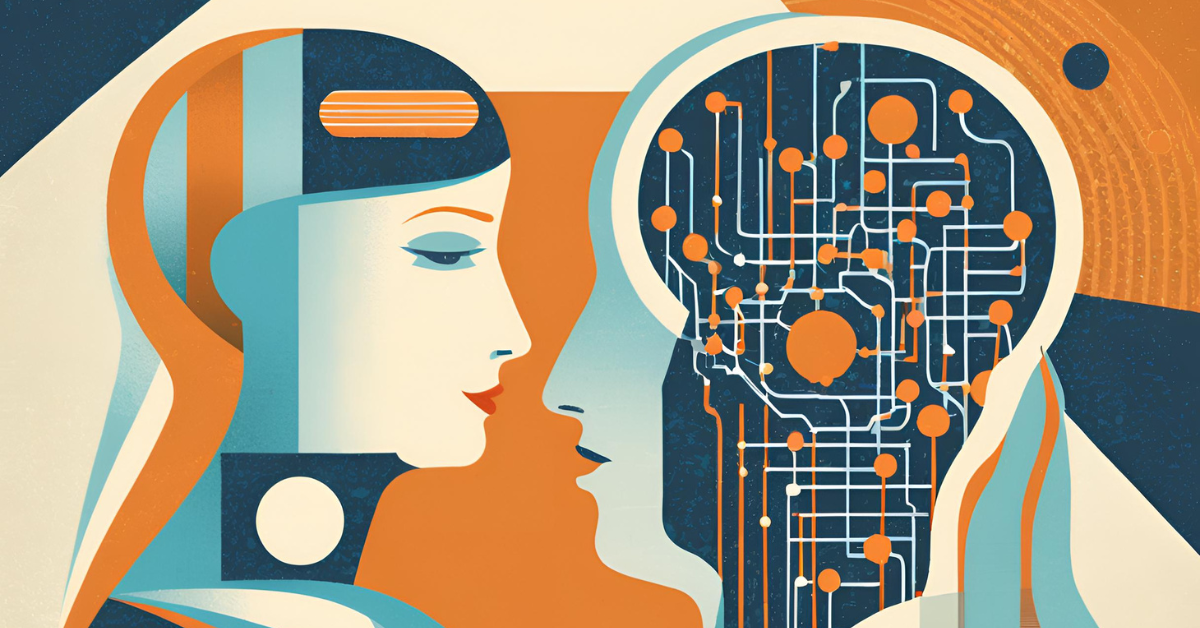
Introduction
Overview of Keras
Keras is a high-level neural networks API, written in Python and capable of running on top of TensorFlow, CNTK, or Theano. It was developed with a focus on enabling fast experimentation. Being able to go from idea to result with the least possible delay is key to doing good research.
Importance of Keras in AI Development
Keras simplifies the process of building complex deep learning models, making it accessible to beginners and researchers alike. It provides a user-friendly interface for creating and training models without compromising on flexibility and performance.
History and Evolution of Keras
Keras was initially released in March 2015 by François Chollet. Since then, it has evolved rapidly, becoming a popular choice for both academic and industrial applications. With the release of TensorFlow 2.0, Keras was adopted as the official high-level API of TensorFlow, further solidifying its place in the deep learning community.
Key Features of Keras
- User-friendly: Easy to learn and use.
- Modular: A model can be defined by a series of fully-configurable modules.
- Extensible: New modules can be easily added.
- Work with Python: No separate configuration files are needed.
Keras vs. Other Deep Learning Frameworks
Keras stands out due to its simplicity and ease of use, compared to other deep learning frameworks like TensorFlow and PyTorch, which can be more complex and less intuitive for beginners.
Setting Up Keras
System Requirements
Before installing Keras, ensure that your system meets the following requirements:
- Python 3.6 or later
- pip (Python package installer)
- Compatible operating system (Windows, macOS, or Linux)
Installing Keras
To install Keras, use the following command:
pip install keras
Note: This command will also install the latest version of TensorFlow as Keras relies on it.
Verifying Installation
After installation, you can verify the installation by running:
import keras print(keras.__version__)
Setting Up Development Environment
Pro Tip: For an optimal development experience, set up a virtual environment and install necessary dependencies. You can use tools like virtualenv or conda.
Understanding the Basics
Core Concepts in Keras
- Layer: The fundamental building block of neural networks in Keras.
- Model: Defines the architecture of the neural network.
- Loss Function: Measures how well the model performs.
- Optimizer: Adjusts the weights of the network to minimize the loss function.
- Metrics: Used to monitor the performance of the model.
Keras Layers and Models
Keras provides a variety of layers such as Dense, Conv2D, and LSTM. Models can be created using the Sequential model or the Functional API.
Sequential Model
The Sequential model is a linear stack of layers. Example:
from keras.models import Sequential from keras.layers import Dense model = Sequential() model.add(Dense(32, input_shape=(784,))) model.add(Dense(10, activation='softmax'))
Functional API
The Functional API provides more flexibility in model building. Example:
from keras.layers import Input, Dense from keras.models import Model inputs = Input(shape=(784,)) x = Dense(32, activation='relu')(inputs) outputs = Dense(10, activation='softmax')(x) model = Model(inputs=inputs, outputs=outputs)
Model Subclassing
Model subclassing allows for more complex architectures. Example:
from keras.models import Model
from keras.layers import Dense
class MyModel(Model):
def __init__(self):
super(MyModel, self).__init__()
self.dense1 = Dense(32, activation='relu')
self.dense2 = Dense(10, activation='softmax')
def call(self, inputs):
x = self.dense1(inputs)
return self.dense2(x)Building Your First Keras Model
Dataset Preparation
Choose a dataset suitable for your problem. For example, the MNIST dataset for digit classification:
from keras.datasets import mnist
(x_train, y_train), (x_test, y_test) = mnist.load_data()
x_train = x_train.reshape(-1, 784).astype('float32') / 255
x_test = x_test.reshape(-1, 784).astype('float32') / 255
Defining the Model
Define the architecture of your model:
model = Sequential() model.add(Dense(32, activation='relu', input_shape=(784,))) model.add(Dense(10, activation='softmax'))
Compiling the Model
Compile the model with an optimizer, loss function, and metrics:
model.compile(optimizer='adam',
loss='categorical_crossentropy',
metrics=['accuracy'])
Training the Model
Train the model using the training data:
model.fit(x_train, y_train, epochs=10, batch_size=32, validation_split=0.2)
Evaluating the Model
Evaluate the model performance on test data:
model.evaluate(x_test, y_test)
Making Predictions
Use the model to make predictions on new data:
predictions = model.predict(x_test)
Advanced Model Building
Handling Overfitting and Underfitting
Overfitting occurs when a model performs well on training data but poorly on test data. Underfitting occurs when a model performs poorly on both. Techniques to address these include using more data, simplifying the model, or using regularization.
Regularization Techniques
Regularization helps prevent overfitting by adding a penalty for larger weights:
- L1 Regularization: Adds absolute value of weights.
- L2 Regularization: Adds squared value of weights.
Dropout Layers
Dropout layers randomly set a fraction of input units to 0 at each update during training, which helps prevent overfitting:
from keras.layers import Dropout model.add(Dropout(0.5))
Batch Normalization
Batch normalization helps improve the training speed and stability of the model:
from keras.layers import BatchNormalization model.add(BatchNormalization())
Hyperparameter Tuning
Hyperparameter tuning involves adjusting the model parameters to find the best configuration. Tools like Keras Tuner can be used for this purpose.
Working with Different Data Types
Image Data
Keras provides utilities to preprocess image data and build convolutional neural networks (CNNs):
from keras.preprocessing.image import ImageDataGenerator
datagen = ImageDataGenerator(rescale=1./255)
train_generator = datagen.flow_from_directory('data/train', target_size=(150, 150), batch_size=32, class_mode='binary')Text Data
Keras supports text data preprocessing and building recurrent neural networks (RNNs):
from keras.preprocessing.text import Tokenizer tokenizer = Tokenizer(num_words=10000) tokenizer.fit_on_texts(texts) sequences = tokenizer.texts_to_sequences(texts)
Time Series Data
For time series data, Keras provides LSTM layers:
from keras.layers import LSTM model.add(LSTM(50, return_sequences=True, input_shape=(timesteps, features)))
Structured Data
Keras can handle structured data using dense layers:
model.add(Dense(64, activation='relu', input_shape=(input_dim,)))
Handling Missing Data
Missing data can be handled by imputation or by using Keras layers that can deal with missing values:
from sklearn.impute import SimpleImputer imputer = SimpleImputer(strategy='mean') X_train = imputer.fit_transform(X_train)
Transfer Learning with Keras
Introduction to Transfer Learning
Transfer learning involves leveraging pre-trained models on large datasets for new tasks.
Using Pre-trained Models
Keras provides pre-trained models like VGG16, ResNet50, etc.:
from keras.applications import VGG16 model = VGG16(weights='imagenet', include_top=False, input_shape=(150, 150, 3))
Fine-tuning a Pre-trained Model
Fine-tuning involves unfreezing some layers of the pre-trained model and retraining them on the new dataset.
Case Study: Transfer Learning for Image Classification
Example of using transfer learning for image classification:
from keras.applications import InceptionV3
base_model = InceptionV3(weights='imagenet', include_top=False, input_shape=(150, 150, 3))
for layer in base_model.layers:
layer.trainable = False
model = Sequential()
model.add(base_model)
model.add(Flatten())
model.add(Dense(256, activation='relu'))
model.add(Dense(1, activation='sigmoid'))
model.compile(optimizer='adam', loss='binary_crossentropy', metrics=['accuracy'])
Model Deployment
Exporting the Model
Save the trained model:
model.save('model.h5')Deploying on Local Machine
Load and use the model locally:
from keras.models import load_model
model = load_model('model.h5')Deploying on Cloud Services
Deploy the model using cloud services like AWS, Google Cloud, or Azure.
Serving the Model via API
Use frameworks like Flask or FastAPI to serve the model:
from flask import Flask, request, jsonify
app = Flask(__name__)
@app.route('/predict', methods=['POST'])
def predict():
data = request.get_json()
prediction = model.predict(data)
return jsonify(prediction.tolist())Real-world Applications of Keras
Computer Vision
Keras is widely used for tasks like image classification, object detection, and segmentation.
Natural Language Processing
Keras supports NLP tasks like sentiment analysis, text classification, and machine translation.
Time Series Forecasting
Keras can be used for forecasting stock prices, weather prediction, and other time series data.
Recommender Systems
Build recommender systems for movies, products, etc., using Keras.
Best Practices and Tips
Efficient Data Handling
Use data generators and efficient data pipelines to handle large datasets.
Debugging and Troubleshooting
Use tools like TensorBoard and model checkpoints for debugging.
Model Optimization
Optimize the model for performance using techniques like quantization and pruning.
Collaborative Development
Use version control and collaboration tools like GitHub for team projects.
Frequently Asked Questions (FAQs)
What is Keras?
Keras is a high-level neural networks API, written in Python and capable of running on top of TensorFlow, CNTK, or Theano. It allows for easy and fast prototyping.
How does Keras compare to TensorFlow and PyTorch?
Keras is known for its simplicity and ease of use, making it accessible to beginners, whereas TensorFlow and PyTorch offer more flexibility and control, preferred by advanced users.
What are the main advantages of using Keras?
Keras provides a simple, user-friendly API, modularity, and the ability to run on top of multiple backends, making it a versatile choice for deep learning.
Can I use Keras for production applications?
Yes, Keras can be used for production applications. It is integrated with TensorFlow, which provides tools and services for deploying models in production environments.
How do I get started with Keras?
To get started with Keras, install it using pip, set up your development environment, and follow tutorials and documentation available on the Keras website.
Hope you enjoyed Learning how to use Keras for AI development with this comprehensive post, covering everything from installation to advanced model building and deployment. Comment below in case you think we missed something 🙂
![]()
Subscribe to QABash Monthly Newsletter
Dominate – Stay Ahead of 99% Testers!





